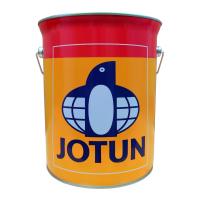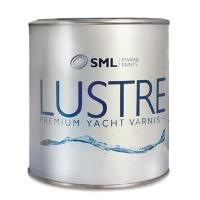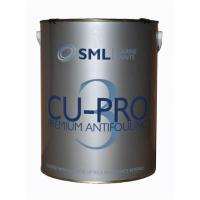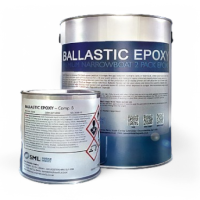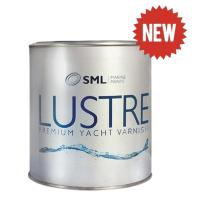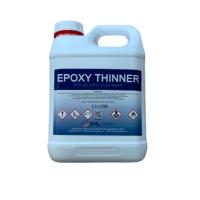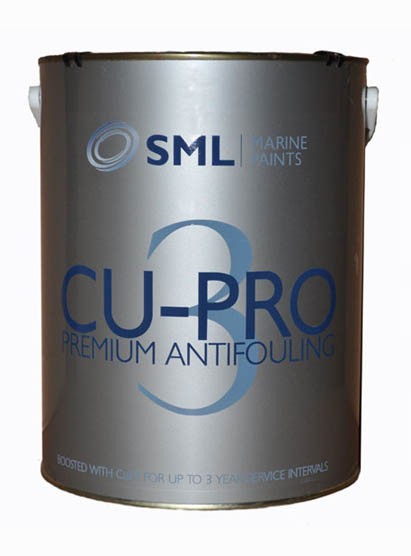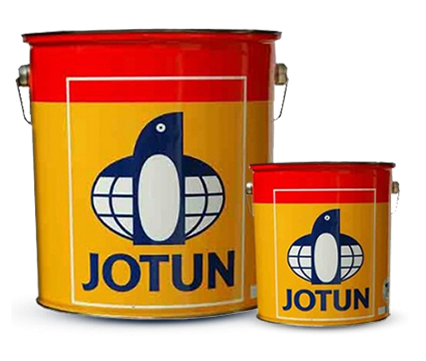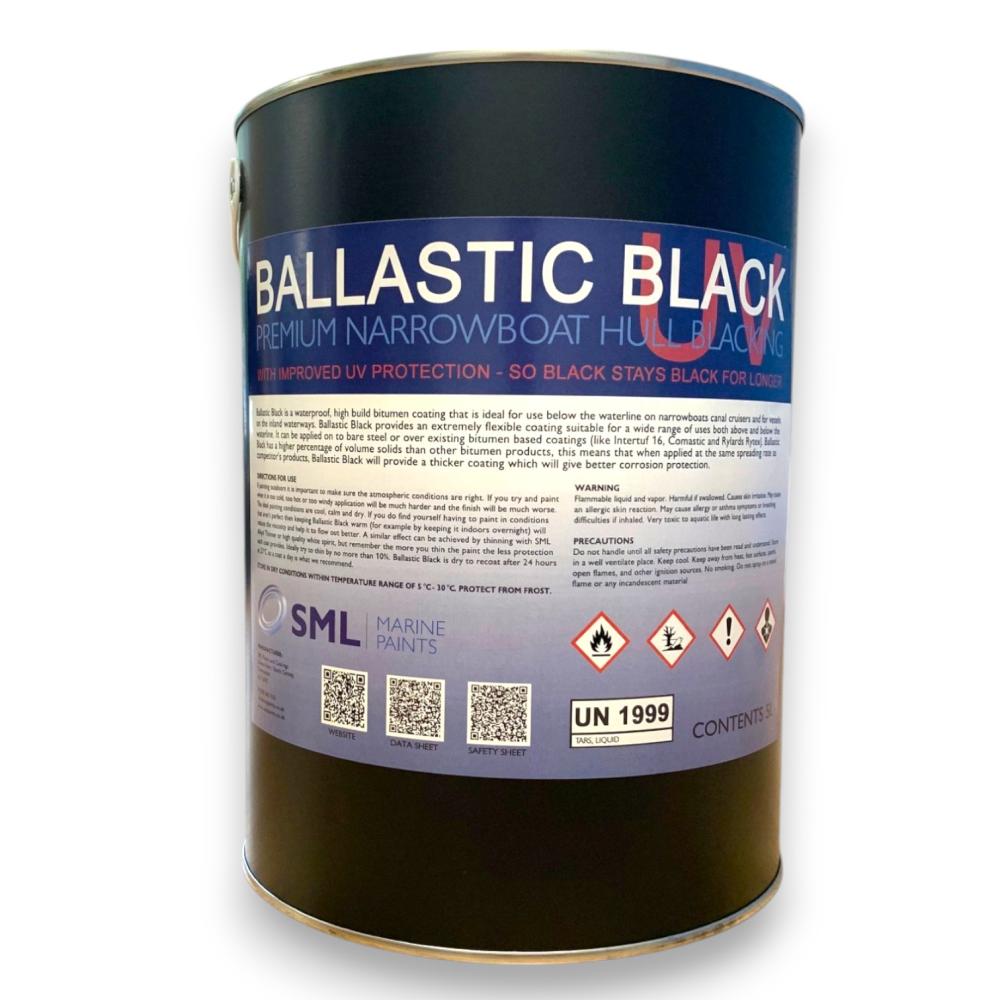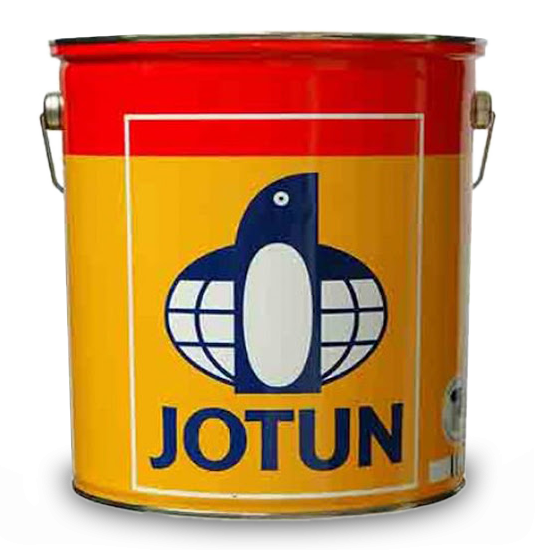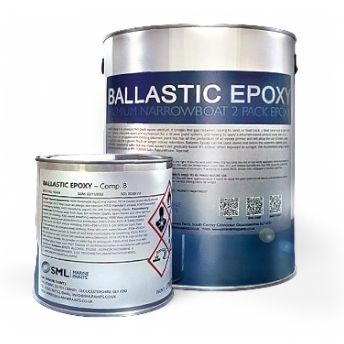Purpose of Marine Paints
Marine paints are specially formulated coatings designed to protect boats, ships, and marine structures from harsh environmental conditions. These coatings provide resistance against saltwater corrosion, UV degradation, marine growth, and general wear and tear. They are essential for maintaining vessel performance, extending lifespan, and reducing maintenance costs. Whether applied to the hull, deck, or interior surfaces, a well-chosen marine paint system ensures durability, aesthetic appeal, and compliance with safety and environmental regulations.
In 2018 he team at SML Paints refurbished a 43ft steel ketch - the Du Bleize. You can read an article on this project and the stages that the team took from start to finish in our SML Boat Restoration Project article
Main Types of Marine Paints and Their Role in a Coating System
A complete marine coating system consists of different paint types, each serving a specific role. It is important that the different paints used in a coating system are compatible. You can find product specific information on our product pages and the relevant application guides and data sheets
We also have our marine paint guide here that can answer some of your questions
- Used primarily for freshwater boats with steel hulls.
- Provides a tough, waterproof barrier.
- Commonly based on bitumen or epoxy.
- Our bestselling hull blacking paints include SML Ballastic Epoxy and SML Ballastic Black
- Designed for high-traffic areas. THe use of optional additives improves slip resistance.
- Available in single- and two-pack polyurethane or epoxy.
- Resistant to abrasion, chemicals, and UV exposure.
- Enhance and protect wooden surfaces from UV and moisture.
- Can be glossy or satin, depending on aesthetic preference.
- Used for adjusting paint viscosity for brushing, rolling, spraying and cleaning up
- Improves paint flow out
- Compensates for adverse ambient conditions during application i.e. wind, sun and temperature
- Different thinners are required for specific paint types.
Marine paints are available in single-pack (1K) and two-pack (2K) formulations, each with distinct characteristics suited for different applications. Below is a comparison of the two based on key factors
| |
Single-Pack Marine Paint
|
Two-Pack Marine Paint
|
|
Composition
|
Pre-mixed and ready to use
|
Two components (base and hardener) mixed before application
|
|
Durability
|
Moderate durability, suitable for low to medium exposure conditions
|
Extremely durable, resistant to chemicals, abrasion, and UV exposure
|
|
Application Complexity
|
Easy to apply with brush, roller, or spray
|
Requires precise mixing and application expertise
|
|
Drying & Curing Time
|
Air-dries through solvent evaporation and / or a reaction with air
|
Cures through a chemical reaction, longer drying but forms a much tougher, more durable coating
|
|
Chemical & Abrasion Resistance
|
Good, but damages more easily under harsh conditions
|
Excellent resistance to chemicals, fuels, solvents, and mechanical wear. Higher abrasion resistance
|
|
UV Resistance
|
Good, but may require more frequent recoating
|
Superior UV resistance (in the case of polyurethane), retains gloss and colour much longer
|
|
Flexibility
|
More flexible, can expand and contract with temperature changes
|
Harder and more rigid, providing better long-term protection, but less flexibility
|
|
Substrate Compatibility
|
Suitable for wood, fiberglass, and metal
|
Best for metal, GRP, concrete and stable substrates
|
|
Common Uses
|
Interior coatings, general-purpose marine topcoats, and hull blacking
|
High-performance marine coatings, professional-grade finishes, industrial and commercial vessels
|
|
Lifespan
|
Shorter lifespan, may require more frequent maintenance
|
Long lifespan, requires less maintenance over time
|
|
Cost
|
Lower upfront cost, but may need more frequent recoating
|
Higher initial cost but provides better long-term value
|
|
Environmental Conditions
|
Suitable for freshwater and mild marine environments
|
Ideal for saltwater and extreme marine conditions
|
|
Best For
|
DIY users, small boats, wooden boats, and interior surfaces
|
Professional use, high-performance vessels, and demanding conditions
|
Choose single-pack marine paint if you need an easy-to-use, cost-effective solution for general marine applications with moderate durability. Choose two-pack marine paint if you require high durability, chemical resistance, and long-lasting protection in harsh marine environments - this assumes you have, (or will acquire) the skills required to overcome more complext application properties.
Additionally, marine paints are available in different chemical compositions;
Epoxy-Based Marine Paints
- Composition - Two-component system consisting of an epoxy resin and a hardener (curing agent).
- Commonly used as primers for steel, aluminium, and fiberglass, as well as protective coatings for underwater hulls, ballast tanks, and industrial marine applications.
- Advantages include Excellent adhesion and durability, with high resistance to chemicals, moisture, and abrasion.
- Some disadvantages are that they require precise mixing and application, and may chalk or degrade under prolonged UV exposure, requiring a topcoat.
Polyurethane-Based Marine Paints
- Composition - Available in single-pack and two-pack systems, made from polyurethane resins.
- Commonly used as topcoats on boats, decks, and superstructures and areas exposed to UV radiation and harsh weather.
- Advantages include superior UV resistance and colour retention, resistance to chemicals and abrasion as we as providing a tough, high-gloss, scratch-resistant finish.
- Polyurethane paints are more complex to apply, with 2-pack products requiring precise mixing and particular painting skills during application.
Alkyd-Based Marine Paints
- Composition - Solvent-based resin that air-dries through oxidation.
- Commonly used above the waterline as general-purpose marine primers and topcoats, wooden boats and interior marine applications in less aggressive marine environments.
- Advantages include their ease of application, adhesion to a variety of surfaces and cost effectiveness
- Conversely, alkyd-based paints are slower drying compared to other paints and are less durable than epoxy or polyurethanes in harsh conditions.
Acrylic-Based Marine Paints
- Composition - Water-based or solvent-based acrylic resins.
- Commonly used as quick-drying topcoats on marine interiors and exteriors and UV-resistant coatings for decks and above-water areas.
- Advantages include low-VOC and environmentally friendly (water based types only), fast-drying and easy to apply with good UV resistance and flexibility.
- Acrylic paints are less chemical and abrasion-resistant compared to epoxy and polyurethane and may require more frequent maintenance.
Bitumen-Based Marine Paints (Hull Blacking)
- Composition - Thick, tar-like resin derived from bitumen.
- Commonly used for protecting steel hulls, especially in freshwater environments such as barges and narrowboats
- Provides a durable waterproof barrier and a cost-effective corrosion protection for steel.
- Can degrade over time with UV exposure.
Key Considerations When Selecting Marine Paints
Choosing the right marine paint depends on various factors:
· Vessel Type and Use – Saltwater vessels require stronger antifouling and corrosion-resistant coatings compared to freshwater boats.
· Substrate Material – Steel, aluminium, wood, and fiberglass require different primers and coatings.
· Environmental Exposure – Consider UV, moisture, and chemical exposure when selecting paint types.
· Durability and Maintenance – Two-pack paints offer better longevity but require more preparation and skill to apply.
· Regulatory Compliance – Some antifouling and solvent-based paints are restricted in certain areas due to environmental regulations.
· Application Method – Ensure compatibility with brush, roller, or spray application methods.
Key Steps in Applying a Marine Coating System
Below you will find a general overview of the steps to be considered when applying a marine costing system. However, every product is different, and you should always refer to the specific data sheets and guides that you can find on each of our product pages for more detailed information.
Additionally, you can read our marine paint guide here
Step 1 - Surface Preparation
- Your specific preparation requirements will be defined by the substrate being painted and the products being used in your coating system
- Generally you will be required to clean the surface thoroughly to remove contaminants, salt, and grease.
- Sanding, grit blasting or ultra high pressure water jetting of the surface may be necessary for adhesion.
- Good preparation is the key to durability. High standards of preparation are particularly important to take full advantage of the durability of 2 pack paint systems. A 2 pack paint system on a properly prepared surface may last in excess of 15 years. On a poorly prepared surface it may last a couple of years. On like for like prepared surfaces, a 2 pack paint system will typically last 3 times as long as a single pack system.
Step 2 - Mixing and Thinning
- Mixing and thinning will depend on the products being used, ambient conditions and the application method.
- Stir single-pack paints well before use.
- For two-pack systems, thoroughly mix the base and hardener in the correct ratio. Pay attention to mixing at the sides of the container. If you don’t mix thoroughly the paint will not cure properly!
- Use manufacturer-recommended thinners if needed.
Step 3 - Application
- It is advisable to be aware of the optimal ambient conditions when applying the paint coating system. As a guide do not paint in the following conditions
- Direct sunlight
- The surface temperature of what you are painting exceeds 30˚C
- Windy conditions – the paint solvent evaporates too quickly to get a smooth finish
- If it is likely the air temperature will not remain at least 3˚C above the dewpoint whilst the paint is still wet. This is possible on a typical winter afternoon after it gets dark.
- If you’re outside and rain is likely while the paint is still wet.
- Apply using a brush, roller, or spray gun, maintaining an even coat. Some paints are best sprayed as it is difficult to get a good finish with a brush or roller.
- Follow recommended drying times between coats.
- Apply multiple coats of primer for optimal protection
Step 4 - Drying and Curing
- Allow each coat to dry fully before overcoating. This avoids solvent being trapped in the paint film. If using a 2 pack, it doesn’t have to be cured, only dry.
- Ensure proper ventilation.
- Follow manufacturer instructions for full curing time.
Step 5 - Inspection and Maintenance
- Check for defects such as runs, bubbles, or uneven coverage.
- Perform periodic touch-ups to maintain protection.
- Regularly clean and inspect the coating to extend lifespan.
Marine Paint Frequently Asked Questions (FAQs)
The FAQ's below are for general guidance only. For specific questions, please refer to the application guides on our product pages, or give us call and we will answer any questions that you have.
Q. How often should I repaint my boat?
A. This depends on the paint type and environmental conditions. Antifouling paint usually requires reapplication every 1-2 years, while topcoats and primers can last longer with proper maintenance.
Q. Can I use standard household paint on my boat?
A. No, marine environments require specialised coatings that resist water, UV degredation, and abrasion. Household paints lack the necessary durability.
Q. What is the best antifouling paint for saltwater use?
A. Self-polishing copolymer (SPC) antifouling paints are ideal for saltwater vessels as they continuously release biocide, providing long-lasting protection. Racing yachts are best served by hard matrix, scrubbable antifouling.
Q. Can I apply marine paint over an existing coating?
A. Yes, but proper surface preparation, such as sanding and priming, is essential to ensure adhesion and durability
Q. What is the best primer for a fiberglass boat?
A. Epoxy-based primers are recommended for fiberglass, particularly below the waterline as they provide excellent adhesion and water resistance.
Q. How do I prevent marine paint from peeling?
A. Ensure proper surface preparation, use compatible primer and topcoat systems, and follow recommended application techniques.
Q. Do I need a topcoat over antifouling paint?
A. No, antifouling paint is designed to be the final layer below the waterline. However, topcoats are required for above-water areas.
Q. How do I make my deck paint non-slip?
A. Use a non-slip additive or choose a marine deck paint that already includes anti-slip properties.
Q. Can I use marine varnish on exterior wooden surfaces?
A. Yes, marine varnish is ideal for protecting wooden surfaces from UV exposure and moisture.
Q. How do I maintain my boat’s paintwork?
A. Regular cleaning, waxing, and minor touch-ups help maintain durability and appearance.
Q. Can marine paint be used on trailers and docks?
A. Yes, marine-grade coatings can be used on docks, trailers, and other structures exposed to water and weather.


